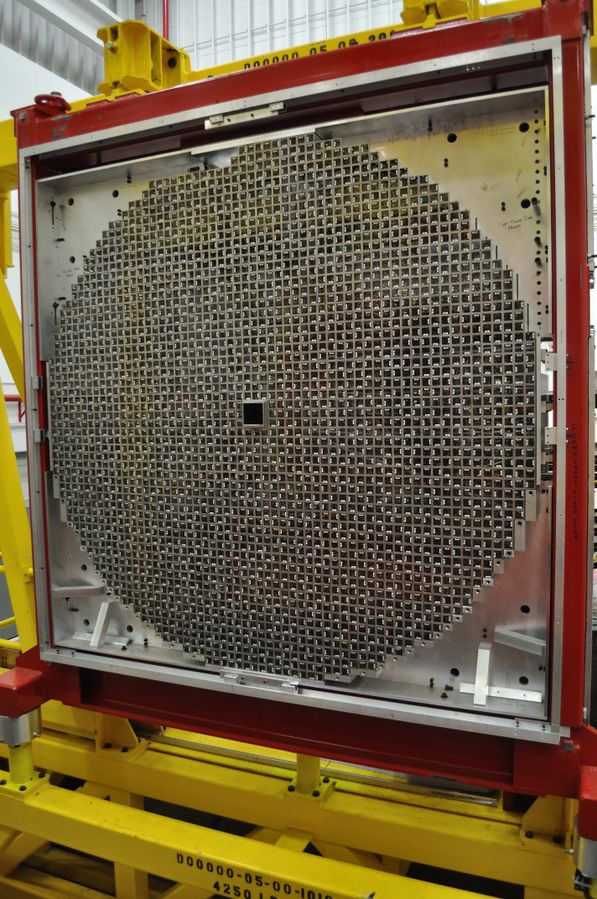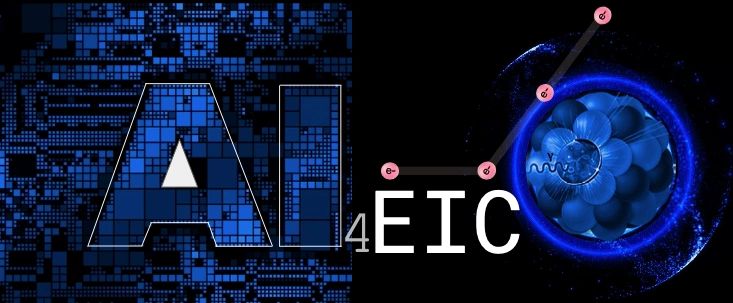The Forward Calorimeter (FCAL) in GlueX#
Overview and Physics Role#
The Forward Calorimeter (FCAL) is one of the two electromagnetic calorimeters of the GlueX spectrometer, located downstream of the target along the beamline.
Its primary purpose is to detect photons and electrons emitted at small polar angles (from roughly 1°–12°) and to provide energy, position, and timing measurements necessary for event reconstruction and particle identification.
Together with the Barrel Calorimeter (BCAL), the FCAL ensures nearly hermetic photon coverage for GlueX, enabling precision reconstruction of neutral mesons such as \(\pi^0\) and \(\eta\), and facilitating photoproduction studies of resonances that decay via multiple photons.
The FCAL plays a central role in:
Detecting forward-going photons from \(\pi^0\) or \(\eta\) decays.
Measuring energy flow in the forward region, crucial for event exclusivity.
Providing fast trigger primitives for high-rate data acquisition.
Enabling electron identification and split-off rejection in combination with tracking and timing systems.
Detector Geometry and Design#
Overall Structure#
The FCAL is a lead-glass sampling calorimeter consisting of
2800 individual modules arranged in a roughly square matrix with a beam hole at the center to allow passage of the photon beam and low-angle particles.
Each module is made of TF-1 lead-glass blocks with dimensions:
corresponding to approximately 15 radiation lengths.
The blocks are wrapped in aluminized Mylar for optical isolation and read out at the back with 5 cm photomultiplier tubes (PMTs), typically FEU-84-3 or ETL 9214B, coupled via optical grease.
The matrix is built from 59 × 59 modules with a 4 × 4 hole at the center (beamline clearance).
Modules are mounted on a precision steel support plate tilted slightly upward to maintain perpendicularity to the incoming photon trajectories.

Fig. 3 :caption: Layout of the GlueX Forward Calorimeter showing the 59×59 module arrangement and central beam hole.#
Readout and Electronics#
Each FCAL module is instrumented with a photomultiplier tube (PMT) coupled directly to the back face of the lead-glass block using optical grease.
The PMTs (primarily ETL 9214B or Russian FEU-84-3 models) operate with custom-built voltage divider bases that ensure linear gain up to 10⁴ photoelectrons.
Signals are transmitted via shielded cables to 12-bit 250 MHz flash ADC (fADC250) modules housed in VXS crates.
The fADCs continuously digitize the waveform, storing it in a pipeline buffer that allows for trigger latencies up to ≈ 3.3 µs.
At the hardware level, the electronics system provides:
Dynamic range from a few MeV up to several GeV,
Timing resolution better than 2 ns per channel,
Summed analog signals for trigger formation (4×4 block sums),
Zero-suppression and pedestal subtraction performed online.
Digitized hits are read out through the DAQ and converted into calibrated ADC counts during reconstruction.
Energy Measurement and Resolution#
The FCAL provides both energy and timing measurements for electromagnetic showers.
Calibration constants convert digitized pulse integrals into physical energy values.
Energy Reconstruction#
The calibrated energy in each channel is computed as:
where:
( Q_i ) is the integrated ADC value,
( P_i ) is the pedestal (baseline),
( C_i ) is a calibration coefficient (MeV/ADC count).
Cluster energy is obtained as the sum over contributing cells:
Energy Resolution#
From beam and simulation studies, the FCAL energy resolution follows:
The first term arises from shower statistics and photoelectron yield, while the constant term accounts for calibration uncertainties and optical effects.
Linearity is maintained up to at least 6 GeV with less than 2% deviation from expectation.
Position and Timing Resolution#
The shower centroid is computed as an energy-weighted mean:
Typical resolutions:
Position: 5 mm / √E(GeV)
Timing: 150–200 ps at 1 GeV
Precise timing allows discrimination between prompt and accidental photons in the forward region (upto \(2~ns\)).
